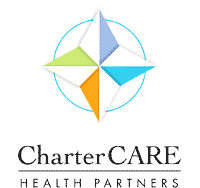Redefining risk as the lines blur between hospitals, insurers
Is CharterCARE Health Partners developing its own narrow network to launch an insurance-based product?
PROVIDENCE – New rumors of further potential insurance market shifts have emerged, following the April 1 announcement of the new Tufts Health Plan partnership with Lifespan to offer a tiered network health plan, known as Lifespan Premier Choice, beginning July 1, where the lowest-priced tier would all be providers within the Lifespan hospital system.
CharterCARE Health Partners, the for-profit joint venture with California-based Prospect Medical Holdings and anchored by Roger Williams Medical Center and Our Lady of Fatima Hospital, is apparently recruiting physician groups in Rhode Island to join in a similar kind of narrow care network, according to a physician who had been targeted for recruitment.
Under the arrangement, members of the physician group belonging to the narrow network would be asked to refer patients within the CharterCARE Health Partners. If patients went outside the network, the costs of that care from outside the network providers would be deducted from any reimbursement paid to the physicians. That was a deal-breaker, according to the physician who had been the target of recruitment.
Otis Brown, vice president of communications at CharterCARE Health Partners, was asked by ConvergenceRI to clarify or confirm the accuracy of the reports.
The move can be seen as part of a major shift in how risk is being redefined by insurers, hospitals and providers in the Rhode Island and national health care markets.
Tufts Health Plan responds
Sonya Hagopian, the vice president of Corporate Communications and Public Relations at Tufts Health Plan, finally responded to questions that had been asked in advance of the ConvergenceRI story about the new Lifespan tiered network insurance plan. [See link to ConvergenceRI story below.]
The responses were marked by a series of skilled parries to the questions, often delivering responses that deflected the questions or did not answer the questions.
In her response to the question, “What are the enrollment numbers for Tufts’ similar tiered plan with Steward Health Care?” Hagopian did not respond by offering any actual numbers regarding enrollment of members. Instead, she drew distinctions between the Lifespan health plan and the Steward health plan.
“The plan with Steward is not a tiered plan,” Hagopian wrote in an e-mail. “It’s a limited network plan. “In a tiered plan, the network is broader and copays vary, depending of what tier a provider is on.”
In a limited network plan, she continued, describing the obvious, “the network of providers is more limited.”
“As you know, the plan with Lifespan is a tiered plan,” she added. “Regarding member numbers, this is a question best answered by Steward.”
Translated, no numbers would be forthcoming from Tufts.
Some thought on Tufts’ part had clearly been put into the difference in the way the health plan partnered with Lifespan differed with the health plan partnered with Steward, judging from Hagopian’s response.
But Hagopian ducked a question about what had been learned from the previous venture with Steward. In response to ConvergenceRI’s question: “How has the experience with Steward Health Care influenced the design of the current Lifespan plan?” Hagopian responded not with an answer but instead, fenced with a question. “Can you elaborate more on what you mean?”
In response to ConvergenceRI’s next question, about why the new health plan would not be offered to small businesses as part of the Rhode Island exchange, HealthSourceRI, Hagopian responded: “We have put our focus on developing a product that we feel will help employers and their employees get access to more affordable, high quality care.”
Another response that deflected and parried the question. Was Tufts saying that health plans offered through HealthSourceRI wouldn’t help employers and employees get access to more affordable, high quality care? Really?
Reaching out to Steward
ConvergenceRI also spoke with Brooke Thurston, the vice president of Media Relations at Steward Health Care, who suggested that ConvergenceRI talk with Tufts Health Plan about any numbers regarding the health plan offered in partnership between the health insurer and the hospital system.
ConvergenceRI laughed, and told Thurston that Tufts’ response had been to say to ask Steward.
Who oversees health insurance plans in Massachusetts? ConvergenceRI asked, thinking out loud. Would the State Attorney General have access to the numbers?
Congress, Medicare and value-based care
On April 16, President Barack Obama signed the Medicare Access and CHIP Reauthorization Act of 2015, a law that eliminates the Sustainable Growth Rate formula that Congress had used to set physician payment rates under Medicare, shifting the 50-year-old program away from the fee-for-service business model, moving physicians toward a value-based reimbursement model.
It gives Medicare a new task: evaluating the value that physicians deliver to patients across a continuum of care, particularly for specialists operating outside the primary care arena.
Under the new law, physicians that have at least 25 percent of their patients in value-based payment models by 2019 will be eligible for bonus payments of 5 percent through 2024, according to analysis by Paul Demko in Modern Healthcare.
The changes underway at Medicare segue well with Rhode Island’s major players in the health care delivery system to move 80 percent of the reimbursement system to global payments instead of fee-for-service by 2019.
The goal, it seems, to put more of the risk on doctors: if those doctors can provide care for less money, while achieving certain quality metrics – they will get to share in the savings achieved by hospitals and insurers, based upon managing bundled payments.
The theory is that by making doctors more responsible for better managing the flow of money, the bundled payments will help drive waste and inefficiency out of the system, and promote a value-based system driven by quality metrics.
Those quality metrics will be driven by population health management analytics, driven by the new health IT operating systems.
The larger question, yet unanswered, pertains to how “health” is defined within the health care delivery system and a continuum of care. Is health the absence of sickness as defined by the need for care? Is health defined by social and economic determinants beyond the measurement of the health care delivery system?
As insurers become linked to hospital systems, and as hospital systems become their own insurance networks, and as the risk in the market is redefined as a doctor’s responsibility, how does the consumer play? What is the patient’s voice – other than to fill out a patient satisfaction survey? How do nurses – who hold up more than half the health care delivery system – get to play and be rewarded in the new value-based care reward system?
Fasten your seatbelts; we are approaching some turbulence.







